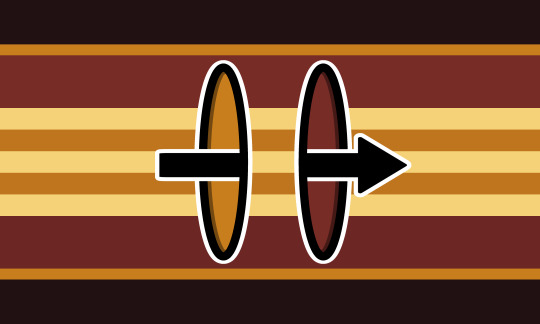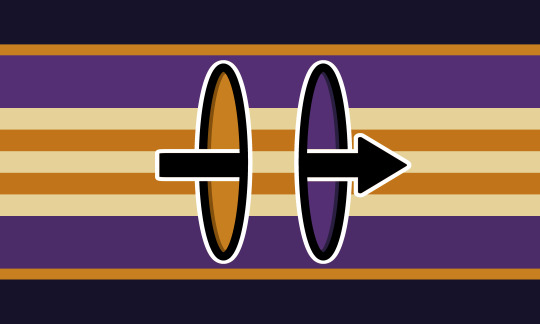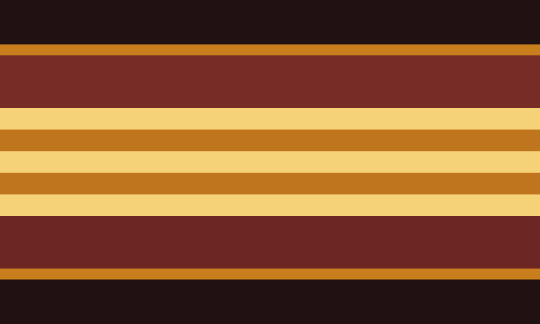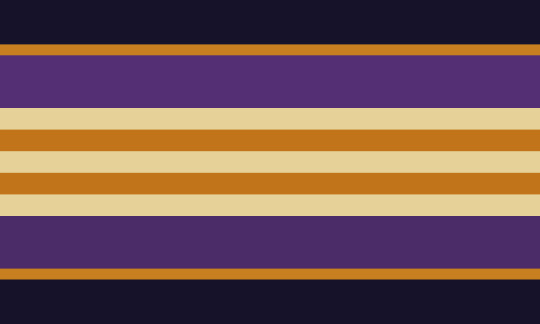Text
eyyy another paper about multiplicity from Zarah Eve and Sarah Parry (and another name i don't recognize, sorry :V)
Conceptualizing multiplicity spectrum experiences: A systematic review and thematic synthesis
highlights:
acknowledgement that multiplicity can be distressing and may lead to a diagnosis of DID or OSDD, even though it isn't immediately inherently associated with this (a lot of other papers on non-DID multiplicity are extremely bad at acknowledging this lol) (they sorta lean towards "multiplicity means lack of distress" later though admittedly)
they either didn't find or excluded Christensen's paper about plural online communities? "plurality" in general wasn't one of their search terms. which, i mean, lmfao but that does feel like a gap.
on the other hand, wtf some of these papers we weren't aware of before. what is this, why haven't we ever found this before (or at least don't remember it lmao)
"person/system-centered therapeutic support" sorry i just love that phrasing
anyway just a nice "hey look multiplicity outside of DID exists" paper yeehaw
- ace
111 notes
·
View notes
Text
Exomember

[eh-xoh-member]
※ An individual who resides or exists in some form within the system or who the system interacts with, but doesn't consider themselves a headmate or comparable due to coming from outside the system or similar reasons.
※ Etymology: greek exo - outside of, external + member
※ Notes: This may apply to some Walk-Ins and Soulbonds, but also entities such as spirits that interact with the system.
ClusterHug Chronicles coined two great terms in addition to this one, Intramember (the opposite of Exomember), and Interwhirl (a grouping which contains both Intra- and Exomembers)!
⊂⫘⫘⫘⫘⫘⫘⊃/ᐠ。ꞈ。ᐟ\⊂⫘⫘⫘⫘⫘⫘⊃
Image ID: A flag with its background divided into four parts, the left two in shades of dark blue, the right two in shades of green, with the left two angled so they're reaching into the right half. On the horizontal middle is a line of two shades of gold/yellow that opens into a square in the center.
29 notes
·
View notes
Text




[image description: four pride flags. the first has 11 stripes. from top to bottom, the colors are: dark red, gold, red, light yellow, gold, light yellow, gold, red, gold, and dark red. the gold stripes are thinner than the other stripes. in the center of the flag is a symbol of a black arrow entering an orange portal and exiting a red portal. the second flag is very similar to the first; however, every instance of red is replaced by purple. the third and fourth flags are the same as the first two, but without the symbols.]

Universe Hopper: A person with the ability to travel between worlds.
This term applies to those who identify with or as someone with the ability to travel between worlds, i.e. fictives, soulbonds, those who are fenikaen, constelic, otherkind/hearted, etc.
Alternate terms are dimensonal traveler, world hopper, etc.
System Traveler: A person with the ability to travel between systems.
Coined as an alternative to system hopper without the connotations of the former term.

Do not discourse on this post. Those who do will be blocked. Discourse-related asks will be deleted.
Do not use my flags for anything relating to pedophilia, incest, zoophilia, and/or abuse.
Do not interact with my account if you are (an): exclus, biphobe, panphobe, antiqueer, terf, radfem, sysmed, antikin, proship, anti self-dx, cringe/flop acct.
120 notes
·
View notes
Text
I think one of the best things questioning or newly discovered systems can do is to just. Not look at system stuff online for a while. And figure out some things themselves.
The online community is great for a lot of things, but I think trying to get too into it when you're still new to your plurality is not the best idea. It's easy to run into misinformation or get the wrong impression about plurality, especially when it comes to what's "possible" or "realistic" for systems (I often see people fakeclaiming systems for very common experiences, for example). I'd recommend learning some basics, like common vocabulary, maybe some different examples of what plurality can look and feel like, and then just logging off for a while. Don't try to force yourself to fit into anything, don't compare yourself to anyone. Just take some time to yourself and figure things out. You learn a lot about yourself when you treat the finding out as a fun result and fully enjoy the fucking around
110 notes
·
View notes
Text

Autocosm: a plural network of selves, each existing in their own dimension/reality/universe, all of which share a soul and/or a sense of "self"-ness with one another. There is a central self, called a metasoul or metaself, from which all other selves, called lunen, are derived from in some way.
-
Extended definiton/extra notes:
The metasoul exists in a realm called the soulscape, which functions similarly to a headspace or paracosm, in that it can vary in size, structure, visibility, stability, etc. It can also have different areas or be split into multiple connected realms.
The metasoul's consciousness extends to all lunen, and they are able to sense, feel, and remember everything their lunen do. Metasouls do not do anything equivalent to "fronting" but their presence in the lunan's consciousness, and the lunan's awareness of their presence, can vary. They may or may not be able to communicate outside of the soulscape. Not all lunen know they are a part of an autocosm, but the metasoul is aware of all lunen.
Lunen may or may not be aware of one another and cannot communicate directly. However, there is an inherent connection between all lunen that drives them to become aware of one another, and possibly experience parts of one another's lives in a manner akin to memories. Lunen may be able to communicate with each other in the soulscape, via the metasoul relaying messages, or not at all.
The soulscape can be accessed by lunen through various methods, such as meditation, reality shifting, dreaming, or other altered states of consciousness. The metasoul may also "summon" a lunan to the soulscape, and some lunen may be able to access it without effort or be connected to it at all times.
Beings other than the metasoul may inhabit the soulscape. These are called habitans. Habitans can be of any appearance, personality, or level of sapience. The origins of habitans vary; they can be created by the metasoul, spontaneously form in the soulscape, or originate from somewhere else. Habitans may or may not be considered part of the autocosm. They are not a part of the "self" the autocosm is based on, but they do inhabit it nonetheless. Not all soulscapes have habitans.
Autocosms may have different origins, although a spiritual aspect is inherent due to the concept of souls being integral. This spiritual aspect need not be focused on or considered important to the identity, though, and other aspects (such as psychological) can be present. Lunen also have different origins; they may be created willfully by the metasoul, be split off from them, spontaneously emanate, etc. (Do not use -genic terms unless you also identify as a system, I coined -genesis as an alternative term grouping for non-system alterhuman origins, you can coin those as you see fit).
As the concept mirrors aspects of many other alterhuman and plural identities, it is possible for autocosms to identify with those as well. Autocosms can be systems, lunen can be godshards/othershards, metasouls can be archetropes, soulscapes can be hearthomes, habitans can be thoughtforms, etc. The only identities autocosms incorporate inherently are plural and alterhuman. However, as they are variations of one self, it is common for lunen and metasouls to be kin with one another.
-
Oh my stars, this is the most complex term I've ever coined. I'm so happy to finally be able to express my alterhuman identity in a more specific way though, so it was well worth the time and effort! If you have any questions, feel free to ask me, and feel free to message me if you think you might be part of an autocosm. I know that it's a lot lol and I can do an FAQ later if needed. Feel free to repost on pluralpedia, termora or other applicable wikis, just don't change the definition (you can include parts of the extra notes on the wiki page however you want as long as it isn't inaccurate though). I'll be posting flags/defs for lunan, metasoul and habitan soon :3
(Also, I need help with an image description again due to my insistence on a weird flag. Sorry about that, I just don't know how to write descriptions for complex flags in an accessible manner).
62 notes
·
View notes
Text
I know it’s like cringe or whatever to care about media unironically but I actually do love when you love a story so much it becomes a part of your soul
73K notes
·
View notes
Text
Fictives who don't want to source-separate are so loved and appreciated here at plural-affirmations!
It's fair to say a good amount of fictives want to distance themselves from source, or to be viewed as a separate person from their source... but here's to those that are perfectly fine with their source!
Here's to the ones who find comfort, warmth, community, and happiness in their source!
To the ones who have a complicated relationship with their source, but don't want to separate regardless!
To those who want to be seen as almost the exact same as their source!
To those who might want to source separate in the future, but don't feel ready to yet!
We see you, and we love you!
🖤💜💙💚💛
143 notes
·
View notes
Text
Non-traumagenic plurals are allowed to talk about their experiences. Non-traumagenic systems talking about their experiences takes away exactly nothing from traumagenic systems.
In fact, it's important for non-traumagenic systems to talk about their experiences. It helps other plurals in so many ways, including:
Helping disordered sysyems realize their plurality has the potential to be a good thing & it may not always be so scary & bad
Helping newly discovered systems realize them being plural doesn't absolutely HAVE to mean they have repressed trauma (being convinced you must have something awful that happened to you that you can't remember is pretty distressing after all! Doubly so if you aren't already seeing a trusted therapist!)
It helps create more representation & normalize a variety of plural experiences
Non-traumagenic systems are not talking over or silencing traumagenic systems by simply talking about their own experiences. Although many anti-endos like to accuse endogenic systems of spreading misinformation, that's not true. You aren't "spreading misinfo" by talking about your own internal experience.
Non-traumagenic systems are allowed to exist. You're allowed to take up space & share your experiences. Non-traumagenics have their own space within the plural community, just as traumagenic systems do, and their own unique perspectives to share. You belong in the plural community. That space & those perspectives take nothing away from others, just as theirs doesn't take away from yours.
Moreover, a non-traumagenic system talking about their experiences on their own blog or Instagram or other social media account is not taking anything away from traumagenic systems or "invading their spaces", because that account was never a traumagenic space to begin with.
If you believe non-traumagenic systems speaking about their own experiences is somehow bad or wrong, please consider that to those outside these extremely niche mostly online spaces, we're all the same regardless of origin. Society at large doesn't differentiate whatsoever & has never heard the words "traumagenic" or "endogenic" - they literally think we're *ALL* crazy here. None of us are palatable to them. Rhetoric that pits us against one another is ableist & sanist rhetoric. Please know this.
So how about instead of fighting against each other, we fight alongside each other for more awareness & acceptance?
724 notes
·
View notes
Note
hihihi could you go into detail about what stuffs you researched about endogenic systems !? bc im very curious and i'd like to learn more about them myself lol
btw i love your blog :3
GLADLYYYYY I'ma just rant because I can and I love talking about this
Endogenic systems are systems that do not form due to trauma and via other means. Examples: (a long list of em)
Parogenic: Parogenic systems are systems formed from free-will. This includes tulpamancy, thoughtform and soulbonding.
Quoigenic: Quoigenic systems are systems that 1) Don't know and don’t care what their origin is 2) Don’t wish to disclose their origin 3) Are mixed origin
Protogenic: Protogenic systems are systems that were born plural or have been plural for as long as they can remember (from what I've noticed this seems to be the most common)
Neurogenic: Neurogenic systems are systems that are formed by pre-existing mental illnesses or neurodivergencies
Tulpa: Tulpa systems are intentionally created systems using tulpamancy/thoughtform processes.
Gateway system: Gateway systems are systems that have a connection to another universe and have exits and entrances where headmates can come and go. (This is primarily what I am I do believe)
Median: Median systems are systems that are more connected than typical systems. The alters in these systems are most commonly called facets. Median systems bridge the line between singlet and system.
Soulbonds: Soulbond systems are systems with a lot of soulbonds. Soulbonds are souls from another universe that have latched onto the system or host. Typically these systems have a lot of fictives however the soulbonds can come from any universe not just fictional ones.
THESE ARE JUST A FEW :D I could list plenty more but I'll save you from that.
Now let's rant, next part is facts.
Most research shows that Disacoiative disorders such as DID and OSDD don't have to be caused by trauma, trauma simply increases the odds to have it. A lot of endos do have trauma but that's not the primary cause for their system and may not be a cause at all.
Several studies show endos do exist and some even say up to 2% of the population is simply naturally plural WITHOUT trauma.
For some systems it may take weeks to form a new alters, some a matter of minutes. It's been shown these experiences vary between endos and traumagenics pretty much equally. There is no one way to be plural, but we do share very similar experiences.
And lastly this isn't research but this is still knowledge about endos, so here are my experiences and views.
I am endo due to spiritual reasons but even when I was traumagenic, and my spiritual related alters were dormant, I've always sorta accepted endos. I didn't understand them at the time but do now and really people are quick to assume. We tend to follow other's leads, and so let's say if someone hates on endos, a ton of people are going to as well because subconsciously they now think endos are a bad thing. This goes for any community, so do proper research before hating on something and criticizing it. And well, don't even hate on something, let people live their lives.
#🪞:: soulbonding vs xyz#endogenic#parogenic#quoigenic#protogenic#neurogenic#tulpa#🪞:: community#🪞:: reblog#🪞:: queue
27 notes
·
View notes
Note
What is the difference between:
introject
fictive/factive?
introjects are headmates usually made by the brain that are based on an outside source
fictives are/are based on fictional characters, and factives are/are based on real people. Both of those can also be types of introjects, or they may be soulbonds (haven't heard of factive soulbonds before but it's probably possible)
18 notes
·
View notes
Text
The Case of Jane Roberts and Seth, and its Relevance to Endogenic Forms of Plurality
Hello everyone! Last night we finally managed to finish reading New Age ‘Channeling’ And Theories Of Dissociation: Applying A ‘Structural Dissociation Of The Personality’ Model To The Case Of Jane Roberts. It’s an older thesis, but it’s a really cool read.
For those who aren’t aware, Jane Roberts was a medium who often channeled an entity called Seth, who would go on to write several books about the nature of consciousness and the universe. He appeared to her one day quite out of the blue when she was in her thirties, and ever since that day she channeled him and he was able to write about his beliefs. The two of them were the catalyst for a lot of New Age and paranormal beliefs, and she often gave classes on ESP and channeling.
As I was reading, I noticed that there was a lot that may be relevant to the plural community here, particularly the endogenic and tulpamancy community. The whole thesis is a good read, but there are some parts that stuck out to me.
The first is this:
“Seligman and Kirmayer argue that around the world, dissociative experiences take place in three main contexts. One of these is ”(1) in response to acute stress or trauma,“ but the other two are not trauma-related at all. These are: ”(2) in socially sanctioned rituals and healing practices that are associated with religious meaning systems, or in artistic performances: and (3) as spontaneous fluctuations in ordinary conscious experience that often go unrecognized or unmarked unless they resonate with local systems of meaning.“ They point out: "It is often assumed that dissociation across these different settings involves the same underlying psychophysiological mechanisms. However, this remains uncertain given the state of current knowledge about both the mechanisms and functions of dissociation.”“ (page 29-30)
Interestingly enough, these are also the three main ways of being plural seen in the community. 1 would be traumagenic, 2 could be soulbonds, gateways or tulpamancers (I know none of those are religious per say, but they are socially sanctioned groups that often have “ritualistic” elements or in the case of gateways and soulbonds, spiritual meanings), and 3 could be the endogenic or quoigenic systems who don’t fit into any other category. Obviously this is a major oversimplification and may not apply to all systems, but you do tend to see these three categories in the community more often than not.
They also go on to argue that the theory of structural dissociation is very focused on a Euro-American way of healing, namely the "speaking about and owning your traumas” way of healing, which is not always applicable in other cultures and contexts and may not always be desirable or necessary. They also seem more focused on a complex view of dissociation involving culture, context, and origin all influencing each other instead of the simplistic origin=pathology view often seen in research.
Additionally, it would seem as if the creators of the theory of structural dissociation never intended their theory to be taken as a set-in-stone proposition, especially for other forms of dissociation.
They actually acknowledge that: “Our definition of dissociation pertains to a division of the personality in the context of trauma. We are aware that this division may also occur in hypnosis and mediumship, that several other definitions of dissociation also address these other contexts, and that there are some indications that dissociation in these other contexts is also best understood as a division of the personality.{…}However, dissociation in mediums is in several regards different from dissociation in DID.{…]The possible involvement of consciousness and self-consciousness in […} dissociative parts in mediumship needs to be examined in more detail before a conclusive general definition of dissociation can be formulated.” (page 36)
In other words, they know it is possible to be plural/have multiple identities in other contexts without it being DID. They acknowledge this. The creator of the theory of structural dissociation never intended for it to be used in other contexts, and it does not explain how dissociation works in general.
When applying it to the case of Jane Roberts, the theory of structural dissociation also fails to explain a large portion of her experiences with Seth and why they are non-pathological/relatively benign in comparison to the pathological manifestations often seen in DID. Likewise, it also fails to explain why channeling is often non-pathological and positive. (Note that the theory of structural dissociation itself treats DID as necessarily maladaptive; this is not what we’re personally saying but what the thesis states.) The author of the thesis believes that if one is to apply it to other forms of dissociation you need to be extremely sensitive to the fact that it’s not made to explain those types, and may not adequately explain much of how those types work.
It’s a very long thesis, so you might wanna reserve a few hours to read and digest the material. Hopefully this is as interesting to you all as it was to us!
54 notes
·
View notes
Note
hey I’m having trouble with soulbonding any advice?
Hey, sorry for the late response!
We personally have written a guide on soulbonding in our own way if you'd like to check it out--it's helped people before and trying different methods for soulbonding generally tends to help.
You can also check out the Sparks System's method which I got them to post for this ask. I don't know of any other methods that have been posted but if anyone else has their own, feel free to share!
I'd also recommend this blog and tag. They have some good info in there and giving a read through some of it might be of assistance. If not, you can always send an ask to them as well!
- Mal
16 notes
·
View notes
Text
Our Soulbonding Technique
For permanent resident soulbonds.
Lie down in a place where you won't be bothered, preferably dark and very quiet, with your eyes closed. Think about the multiverse and the infinite possibilities of things that exist out there. Let yourself float into that, away from this world, potentially getting to the point where you don't feel connected to this realm or your physical body at all. When you feel connected to the multiverse, directly talk to it (not out loud with the body's voice, but with your thoughts). Introduce yourself to it and state your reason for being there. Ask it for help connecting you to whoever you're trying to soulbond. You do not have to have a specific soul in mind, this works for "someone that fits this description" or "a version of this character I know".
The multiverse will then do 1 of 2 things if you've connected to it properly and it wants to help you. It will either kick you back into this realm with a new person in your system (who will show up either immediately or within a few hours), or it will present you with options.
If it gives you options of souls to choose from, these are going to be visible to you as soul orbs. There are a few ways to go about getting a feel for who these souls are. If you are good at reading auras or feeling energy, you will be able to tell the aura/energy of the souls. If you have a history of doing in-depth soul work, you might be able to look through the soul's memories. If you can't do either of these things, and have no way to tell what the souls are like, feel free to ask the multiverse for help deciding or to decide for you. When you make a decision, thank the multiverse and say which one you'll be taking, and then focus on the soul and connecting with it, and snap yourself back to this realm. The soul should now be out of the orb form and with you in your system.
Note: Like all soulbonding methods, this might not work for the first few attempts. It also might not work for you at all, but we have seen a decent success rate with this.
53 notes
·
View notes
Note
I thought the soul bonding community was a subgroup of the kin community not plurality?
Nope, it initially had nothing to do with the kin community. It's current heavy association with them is not something we're too well read on but is to our knowledge part of the same cultural dissolving we've previously mentioned.
Soulbonders merged with other communities over time to hold onto some identity which includes both some tulpa communities and the Kin community quite heavily. It started out though as an independent group in private mailings lists then early blog communities like LiveJournal. From there it spread across the internet to places like Reddit and Tumblr before eventually crumbling as a community into the less known practice it is today, scattered across multiple other communities.
For a short summary on them check this out https://lb-lee.dreamwidth.org/1120824.html
(We reccomend the whole thing in general if you want more knowledge on the early Plural community. It doesn't know much about tulpa history though)
44 notes
·
View notes
Text
Here’s some positivity for systems who are punk or pluralpunk!
Punks of any movement play key roles the movements they are a part of. Plural punks and those who are pluralpunk are not only important members of the plural community, but they helped make it into what it is today! Here’s to all the pluralpunks out there, and the punks who are plural!
🖤 Shoutout to systems who are part of the pluralpunk subculture!
🩼 Shoutout to systems who are a part of madpunk, cripplepunk, crustpunk, solarpunk, straight edge, anarcho-punk, or other punk subcultures!
🤘 Shoutout to systems who push against oligarchy, monarchy, colonialism, imperialism, and authoritarianism, who are involved in leftist politics in their cities, and who fight back against unfair establishments!
🌿 Shoutout to systems who are poor or live in poverty while still finding ways to live punk lifestyles!
☀️ Shoutout to systems who take part in mutual aid and give back to their communities!
🪡 Shoutout to systems who sew, cross-stitch, repair furniture and appliances, and know other skills to help prolong longevity of every day items!
🎵 Shoutout to systems who are inspired by alternative and punk fashion and music!
♿️ Shoutout to disabled systems and those with chronic pain whose disabilities prevent them from learning DIY skills! We promise you’re just as punk even if you can’t practice DIY!
📖 Shoutout to systems who create flyers and zines, table at events, and help spread the word of the punk movement in their spaces!
🎨 Shoutout to systems who are punk artists, writers, musicians, filmmakers, and other creatives!
🌟 Shoutout to systems who are Black, Indigenous, or Asian punks, and to all punks who are people of color! Y’all are the pillars and cornerstones of these movements - have always been and always will be!
🌈 Shoutout to individual headmates who are punks in systems who aren’t! Your punk identity is not invalidated in the slightest by not sharing punk culture with your system!
📢 Shoutout to systems who stand up against and readily call out transphobia, homophobia, racism, xenophobia, and other forms of bigotry in their spaces!
Remember punk is a culture, a mindset, and a way of life! There’s no one right way to be punk - punk is by nature refusing conformity and living life on your own terms outside societal standards! So please embrace your identities as plural and punk, and feel free to express yourself and be yourself in punk spaces!
We’re wishing the very best for you and your system in all that you do! Remember to stay safe and anonymous when engaging in direct action, keep yourself hydrated at punk shows and events, and give yourself plenty of breaks when crafting if you need them! It’s punk to take care of ourselves in a world that’s actively working against us! Thanks for reading, and have a wonderful day!

(Image ID:) A pale orange userbox with a cluster of multicolored flowers for the userbox image. The border and text are both dark orange, and the text reads “all plurals can interact with this post!” (End ID.)
145 notes
·
View notes
Text
opposite of self insert. inserting characters into yourself
1K notes
·
View notes
Text
🦇 Dear fellow fictives and/or soulbonds: sometimes it's important to realize that just because you're someone else's headmate, doesn't mean that you haven't had your own experiences outside of this system you're now a part of. I've had memories of my past life the entire time we've been doing this whole system discovery, and it's come to a point now where it's undeniable to me that I've had a past life that differs greatly to what one would expect.
So next time you start wondering if you're just "made up" by someone else, hold onto those memories. They're just as real as anyone else's.
24 notes
·
View notes